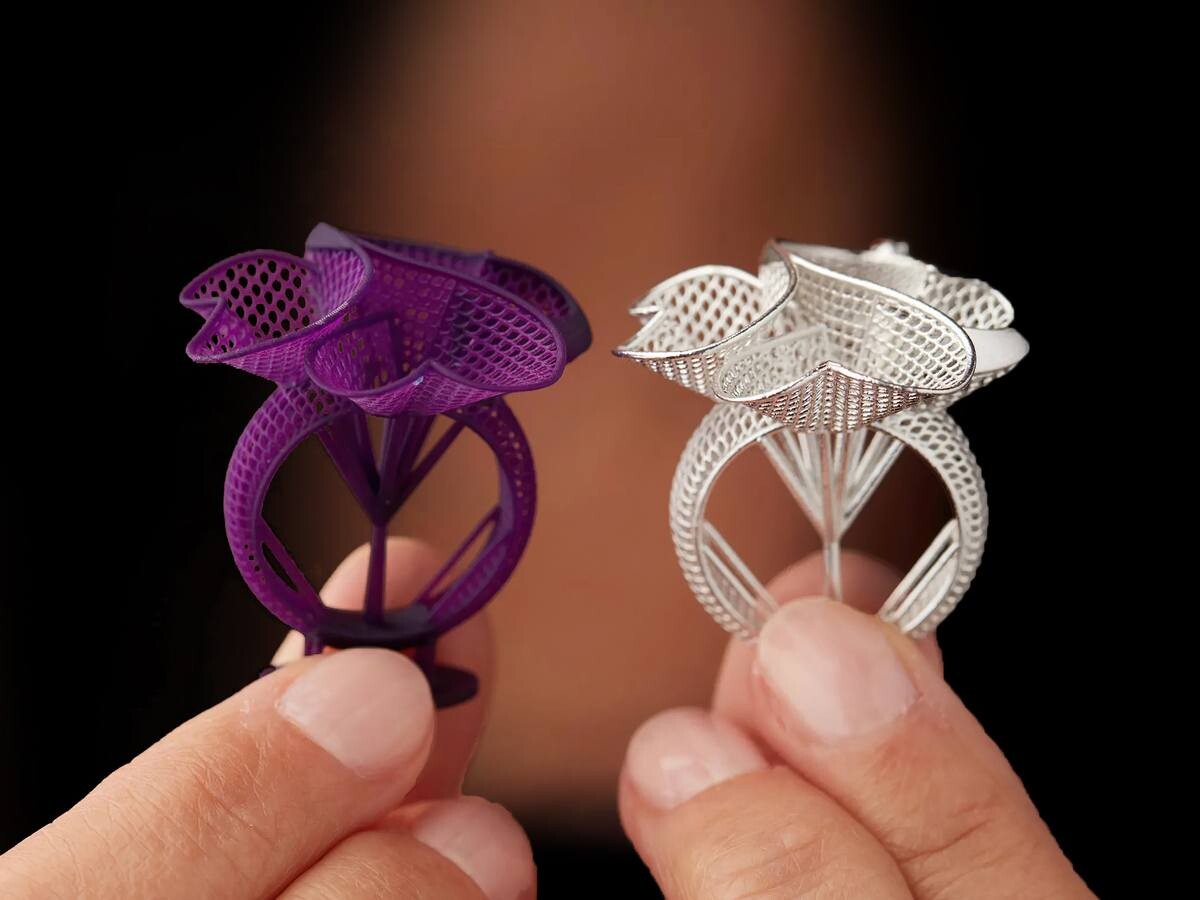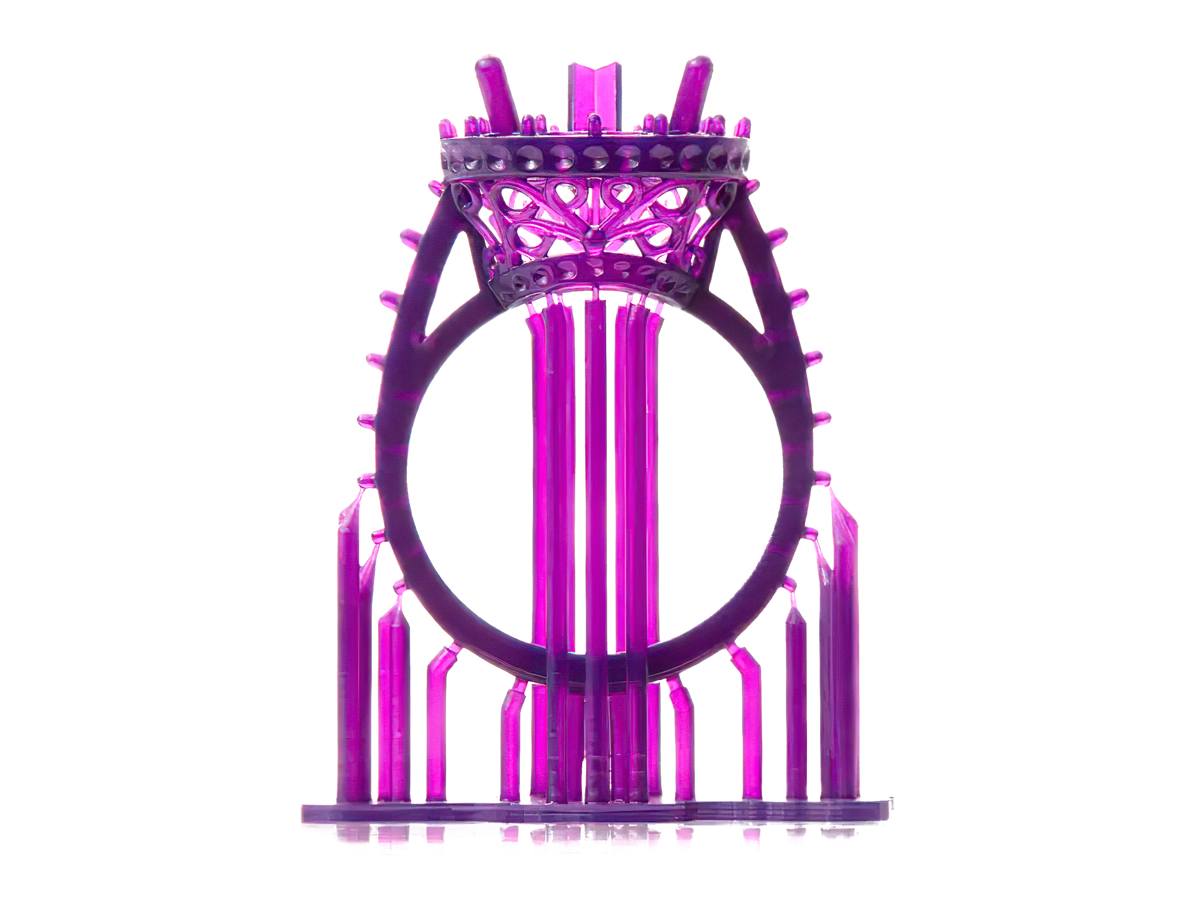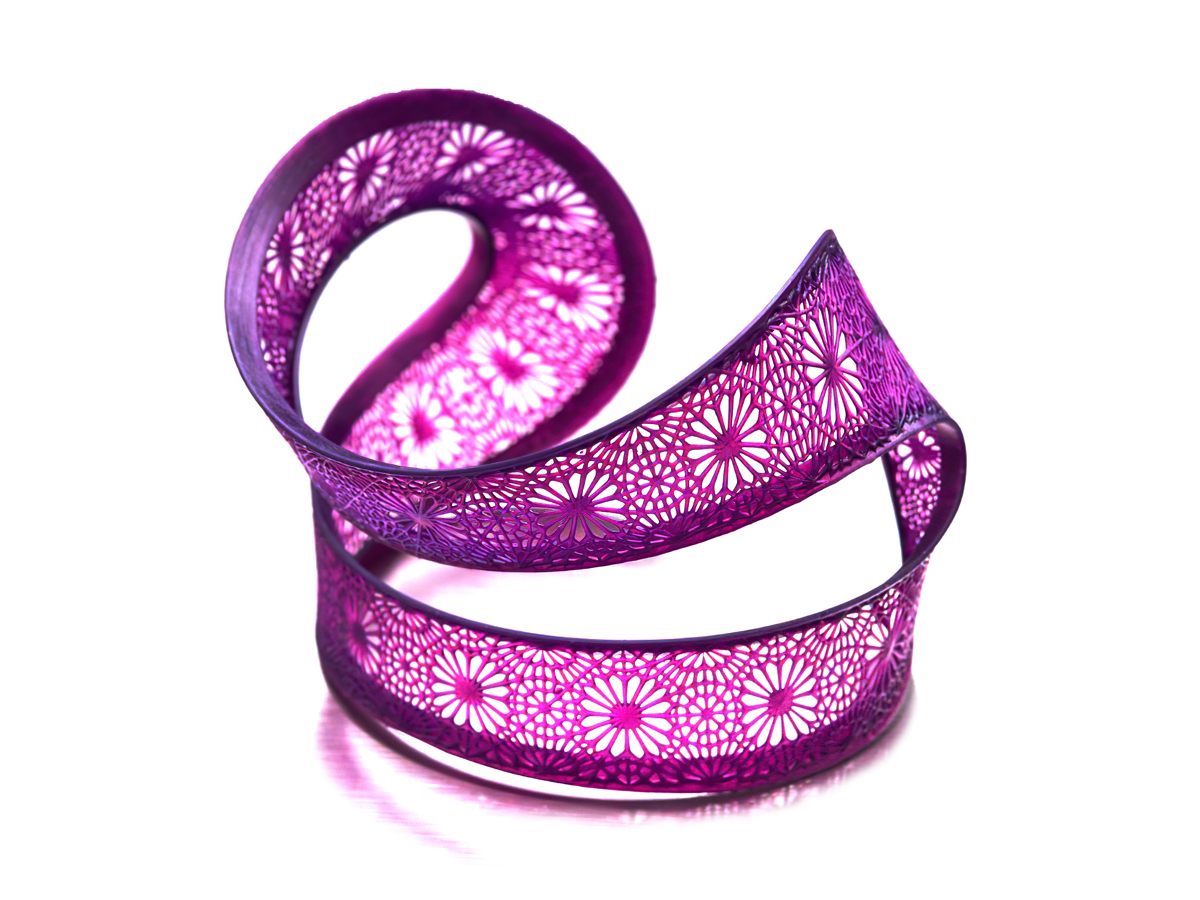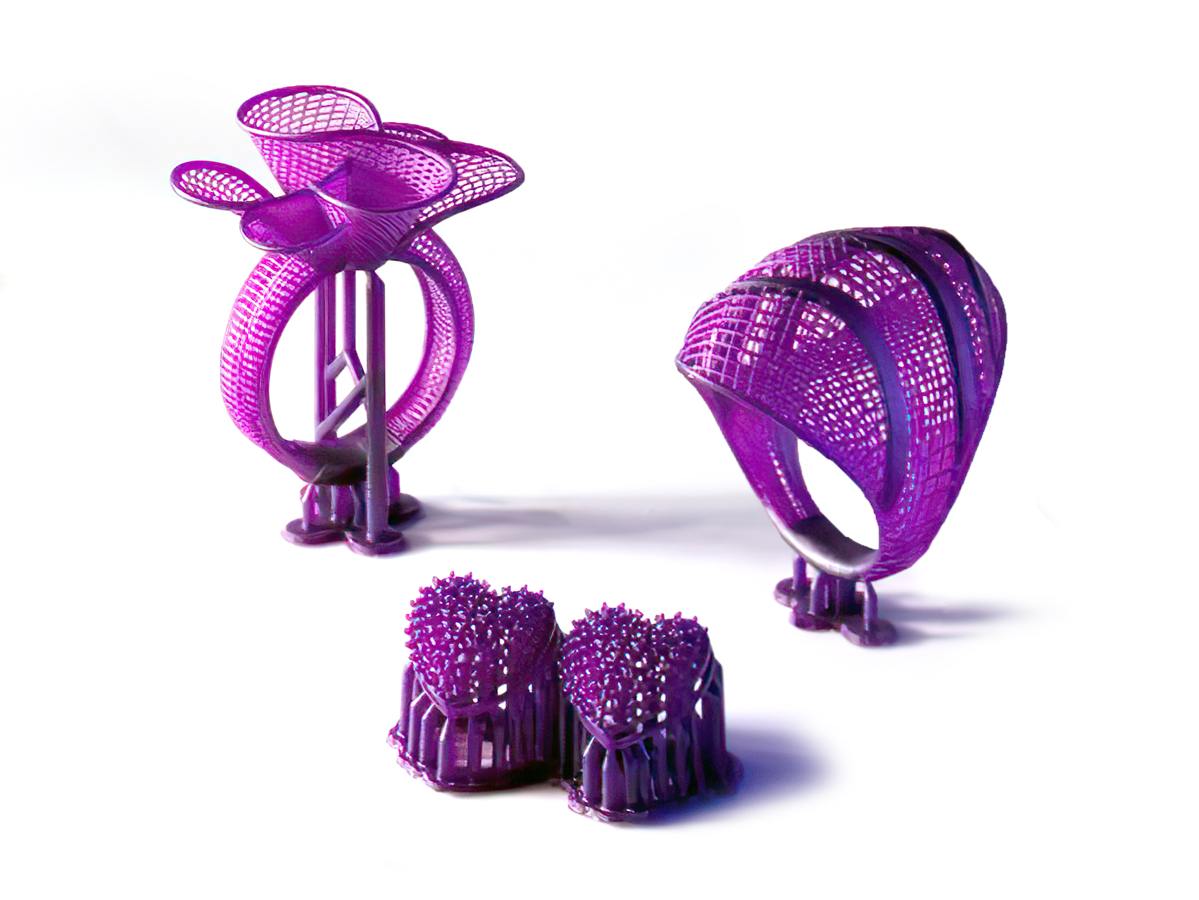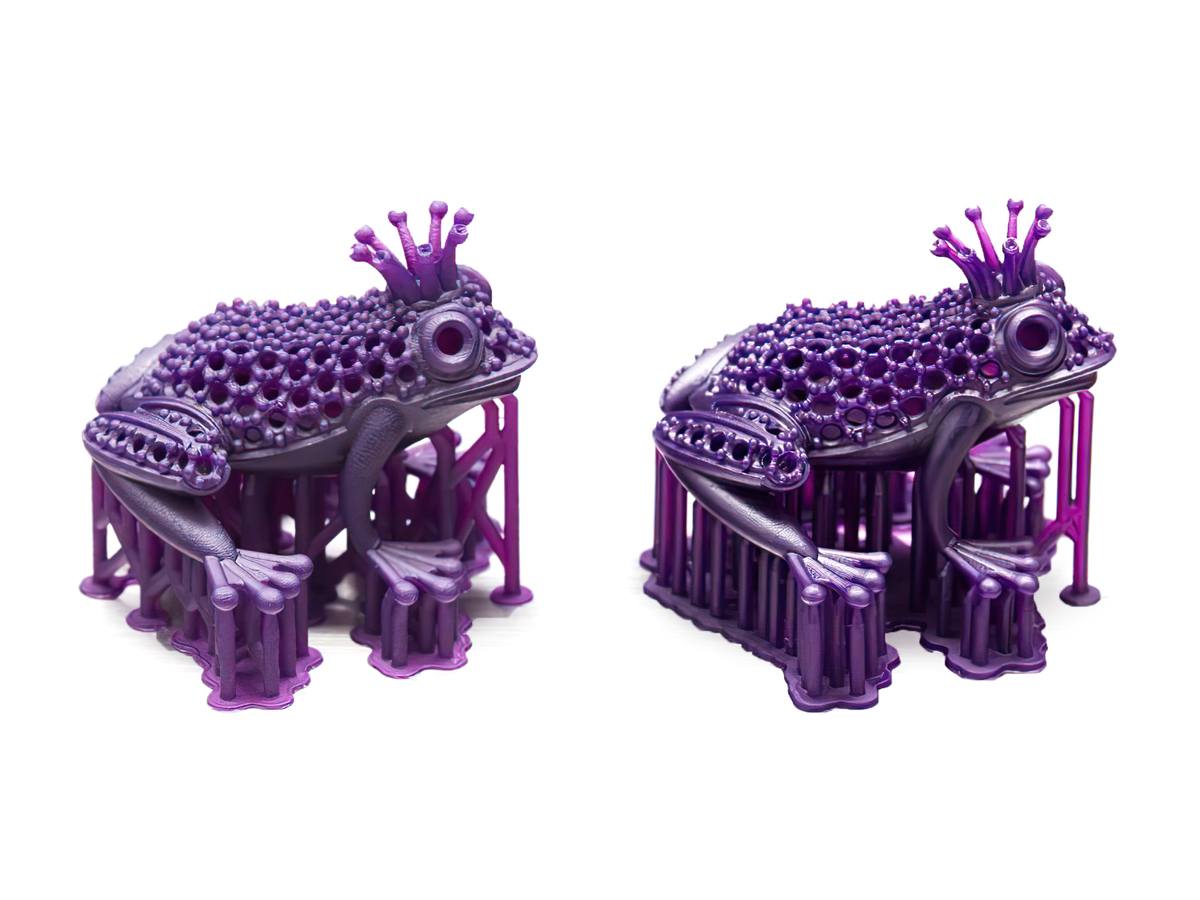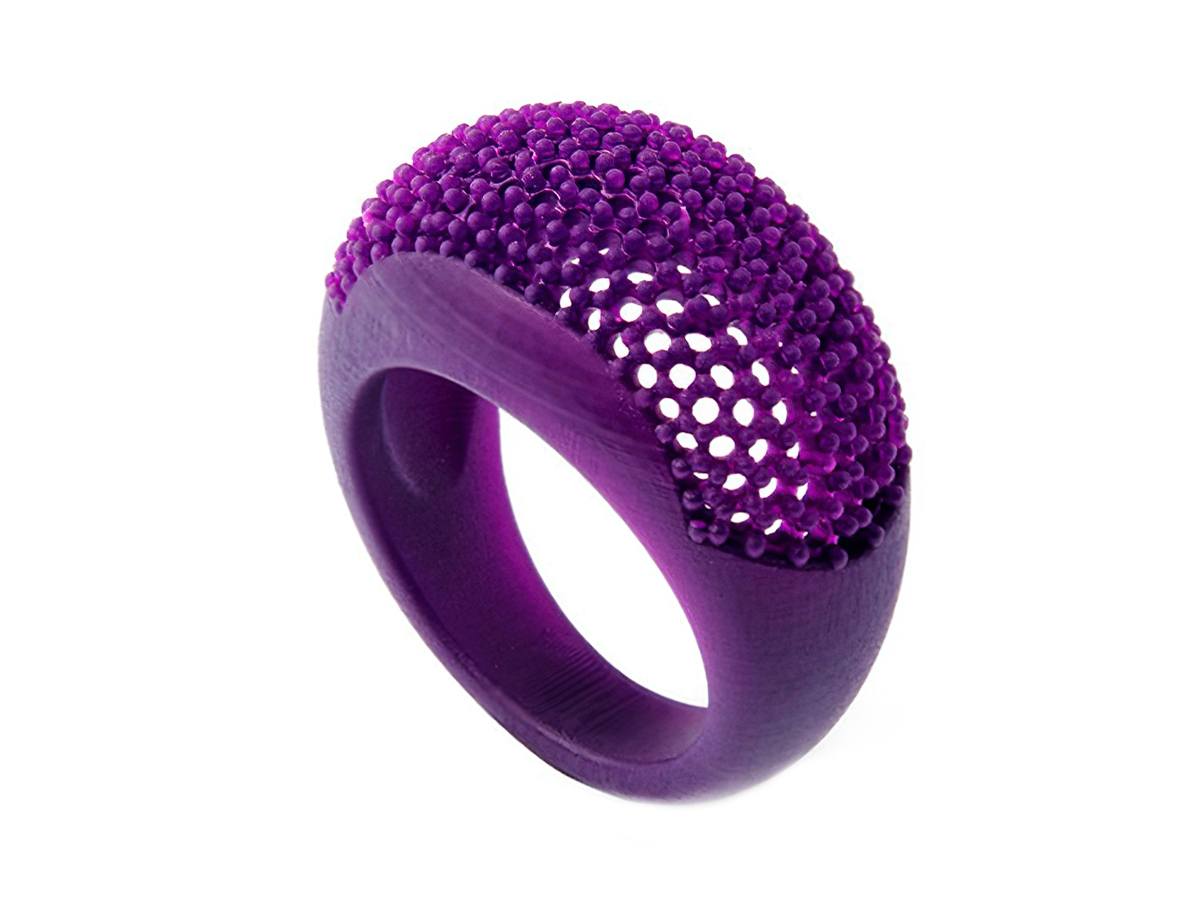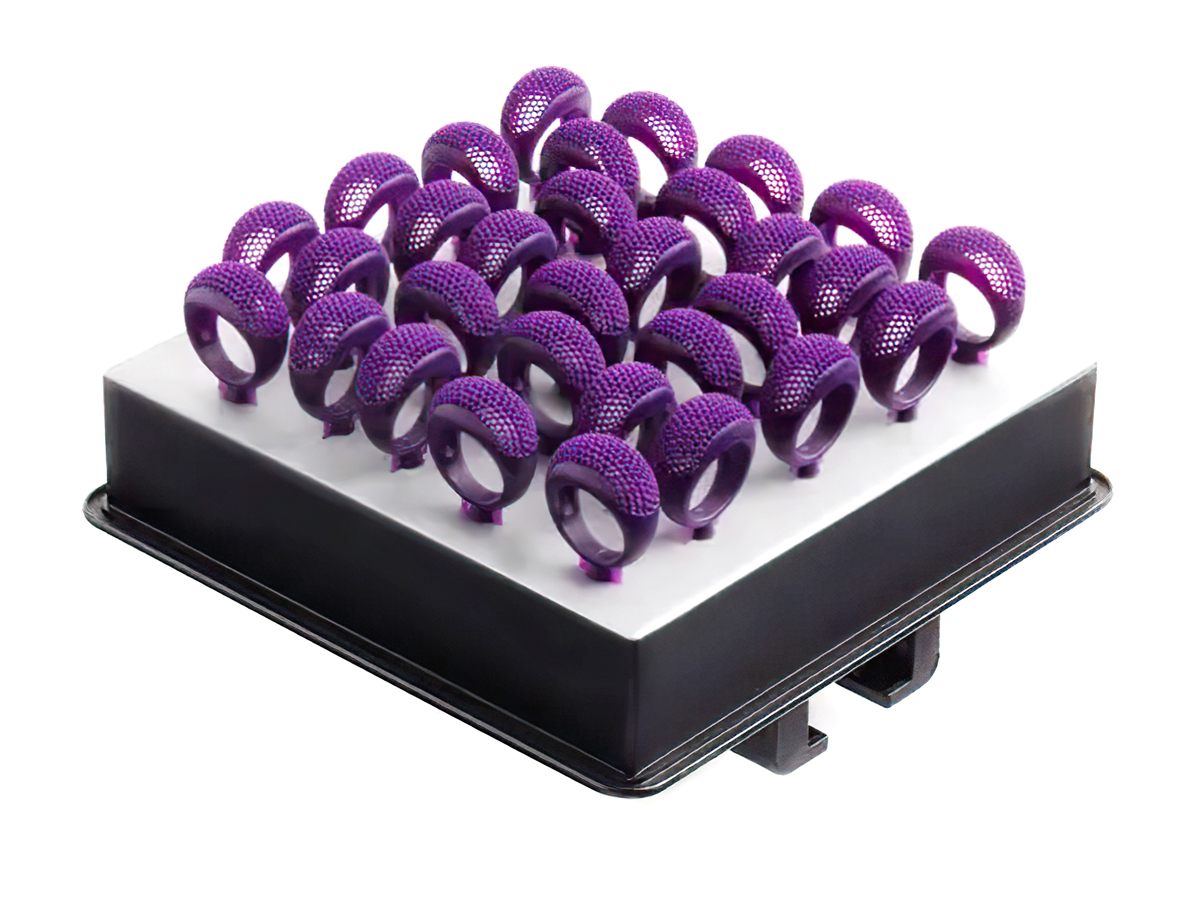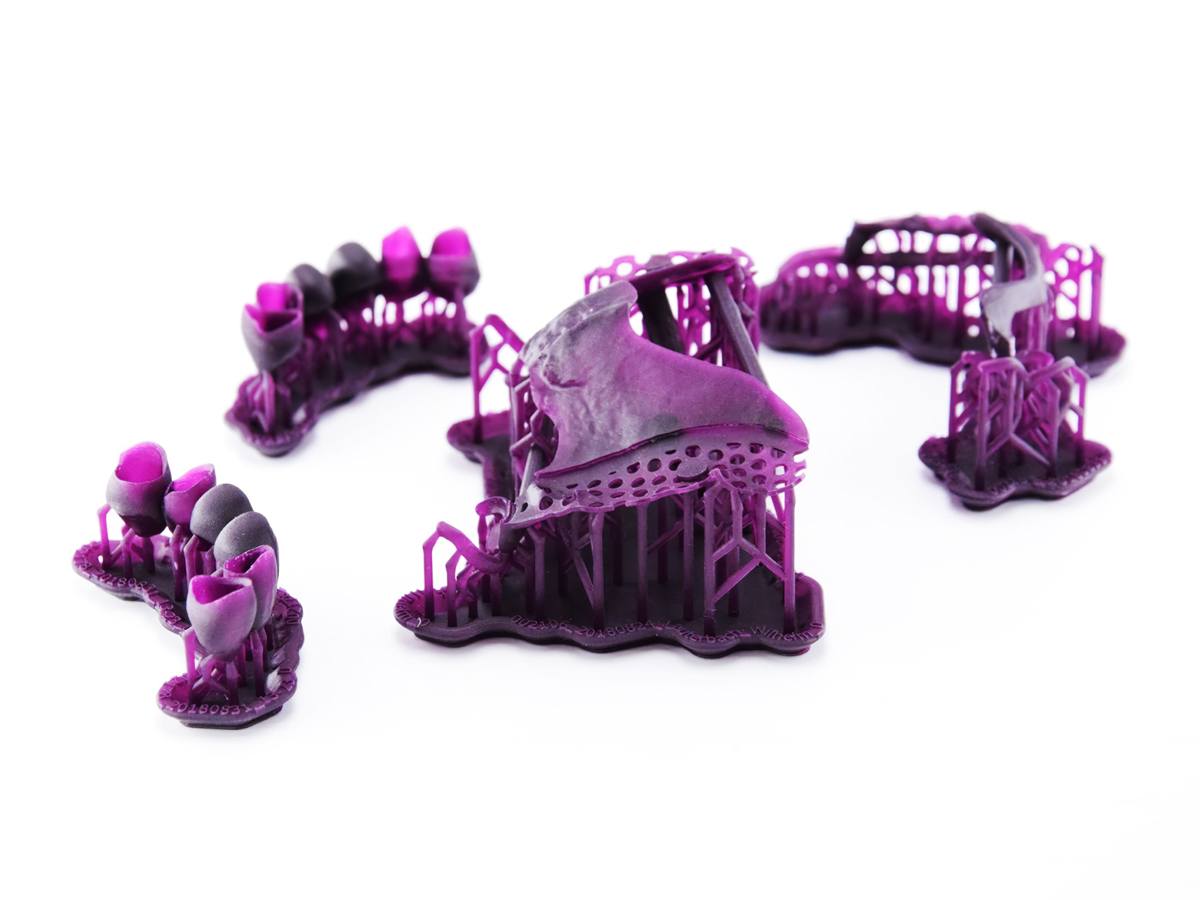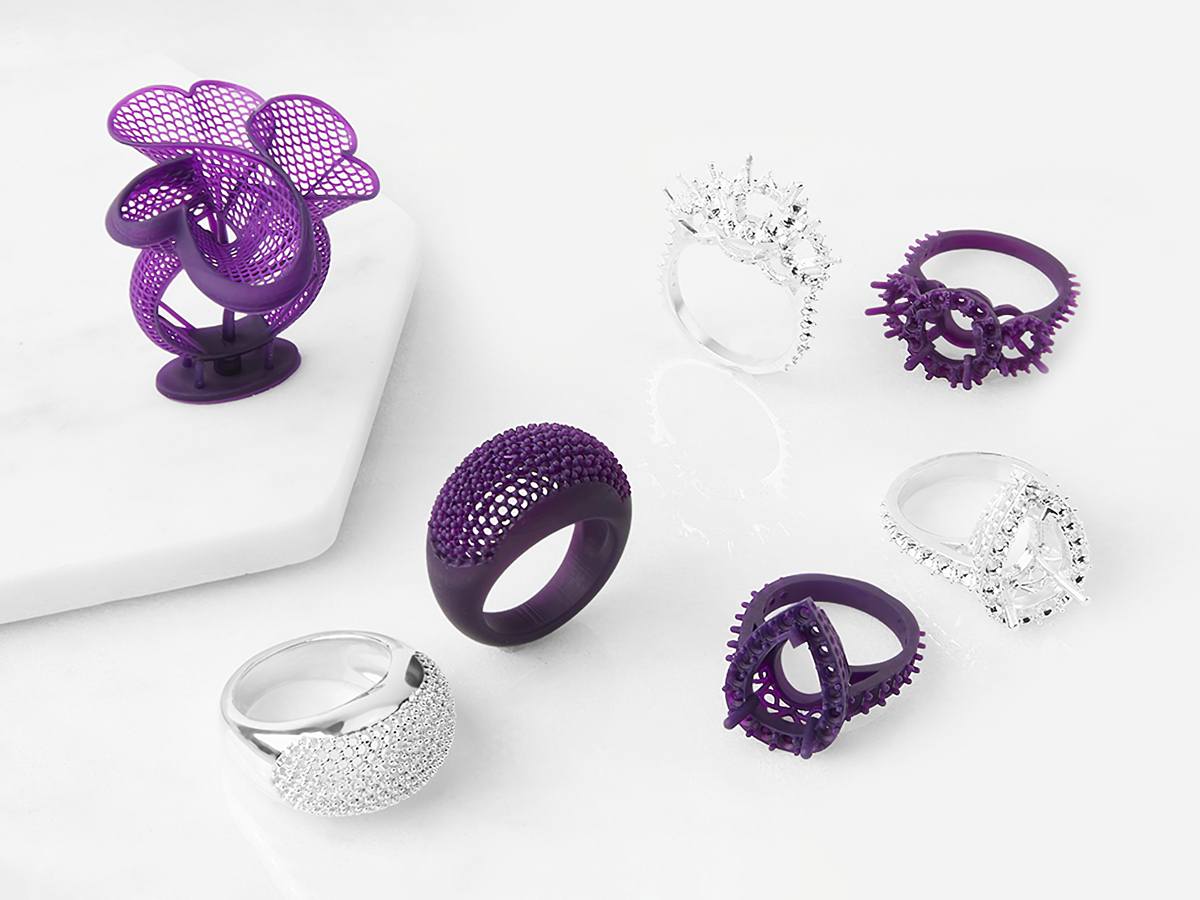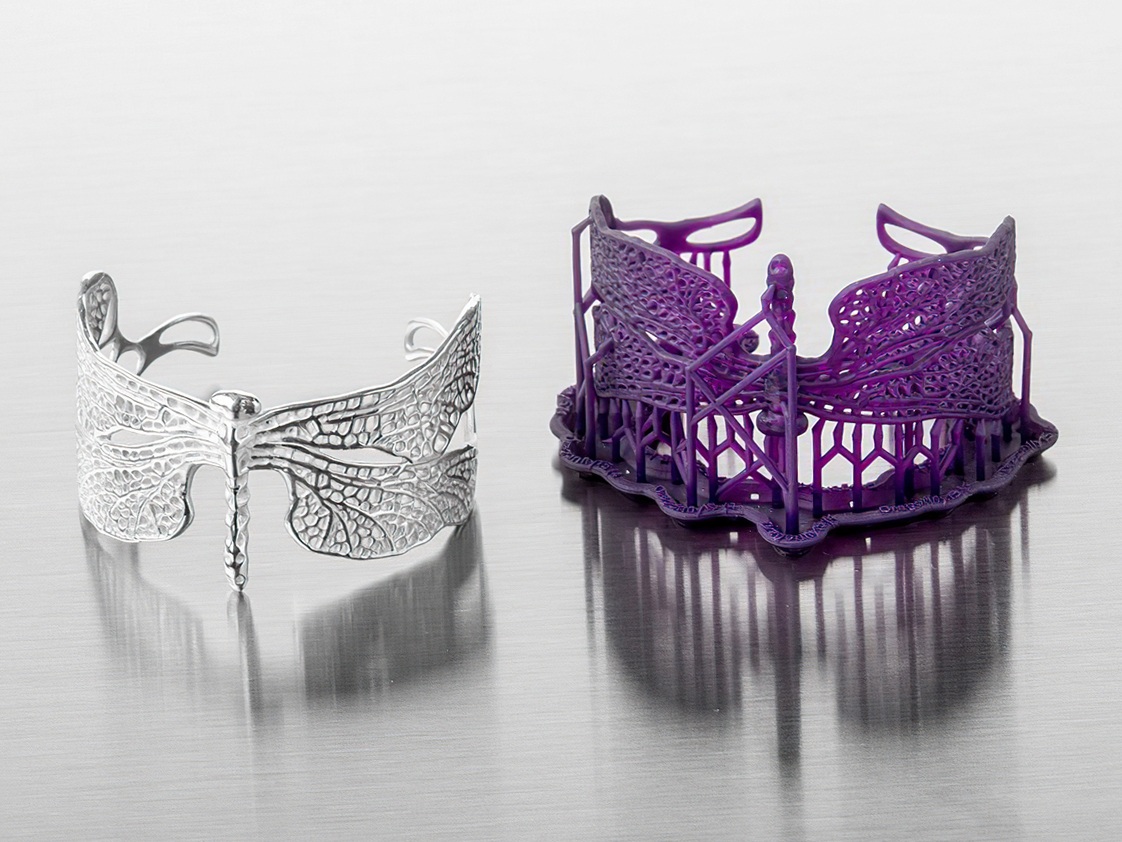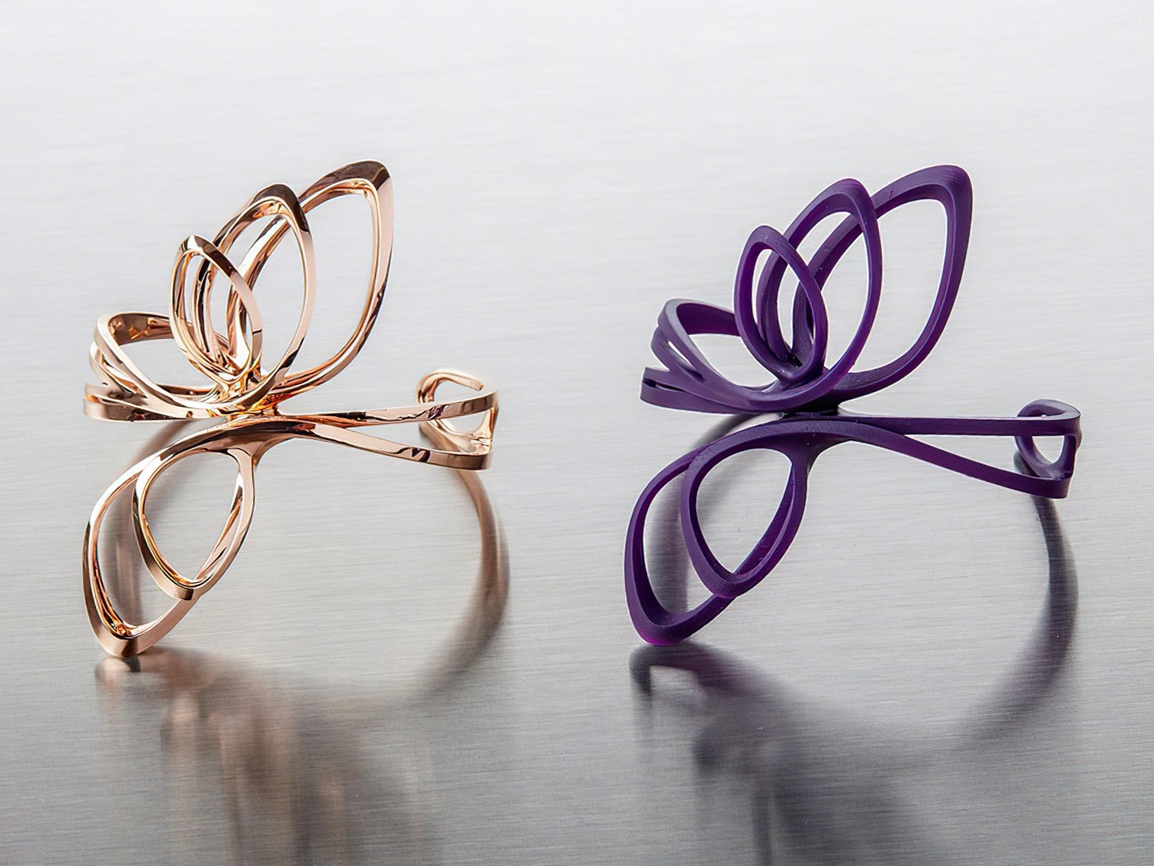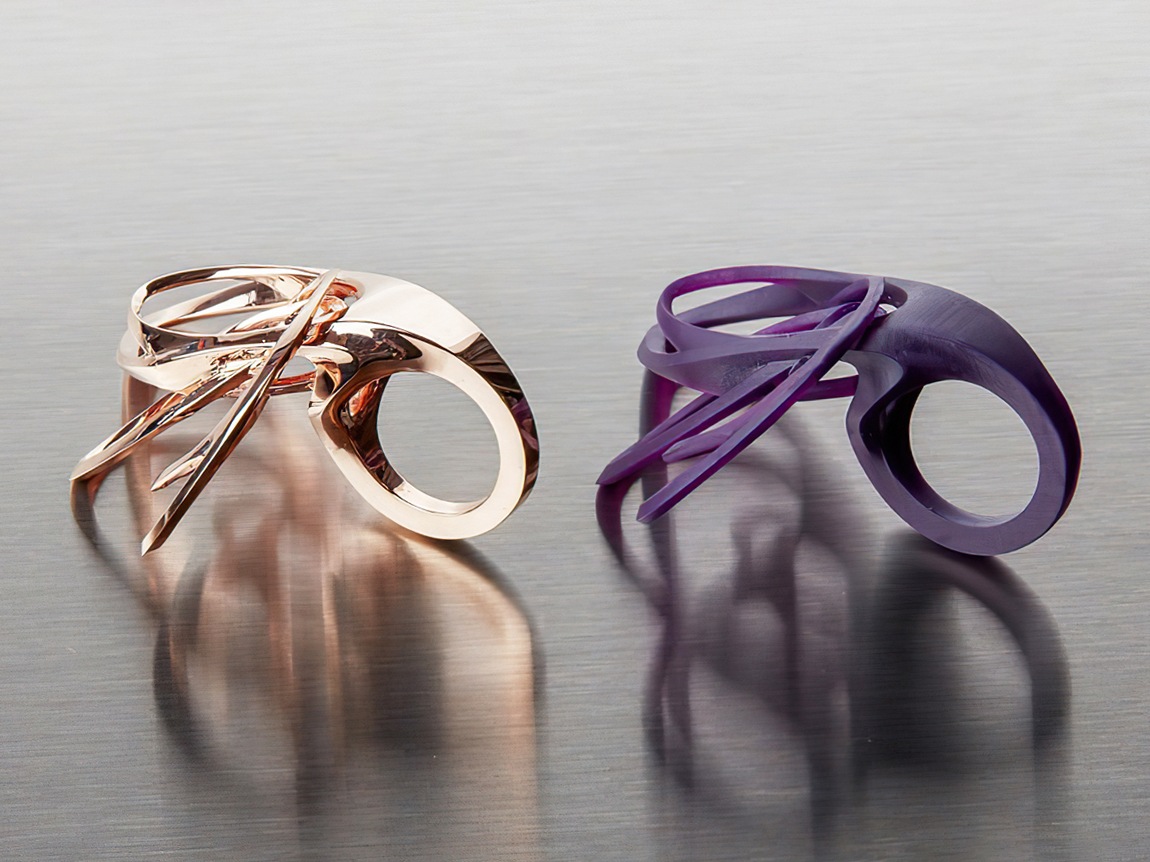SLA Formlabs Castable WaxSLA Formlabs Castable Wax Castable Wax Resin offers high strength and stiffness, making it highly capable of printing ultrafine filigree jewelry. The high green strength ensures excellent shape retention for thin patterns such as wire filigree. Printed parts are strong enough to handle with no post-cure required, allowing for a fast and simple workflow. Max Build Size Min Build Size 5 x 5 x 5 mm Default Layer Height 0.05 mm Optional Layer Heights 0.025, 0.05 mm Tolerance ┬▒0.1% (with a lower limit of ┬▒0.1 mm) Up to 40 Ōäā Smooth ŌśģŌśģŌśģŌśģ Detail ŌśģŌśģŌśģ Accuracy ŌśģŌśģŌśģŌśģ Rigidity ŌśģŌśģŌśģŌśģ Flexibility ŌśģŌśģ Available ColorsPurple
Available Post ProcessSuitable For Complex designs with intricate details, Not Suitable For Functional prototypes and end products, Additional InfoA 20% wax-filled photopolymer for reliable casting with zero ash content and clean burnout, Castable Wax Resin accurately captures intricate features and offers the smooth surfaces stereolithography 3D printing is known for.
Feature
3D PrinterMaterial Spec Sheet
Stereolithography is used to build your design with this material.Starting from a 3D model, a model is built by cutting it into thin layers via specialized software. A support structure is created, where needed, in order to deal with overhangs and cavities. The process takes place in a large tank and begins when a layer of liquid polymer is spread over a platform. This machine then uses a computer controlled laser to draw the first layer onto the surface of a liquid polymer, which hardens where struck by the laser. The model is then lowered and the next layer is then drawn directly on top of the previous one. This is repeated until the model is finished. In this way, layer by layer, an object is ŌĆ£drawnŌĆØ in the liquid by the beam, with the layers being consolidated throughout the process. When the object is complete, it is raised out of the tank via the supporting platform ŌĆō much like a submarine rising to the surface of the water ŌĆō with the excess liquid flowing away. The supports are removed manually after the model is taken from the machine.
|
